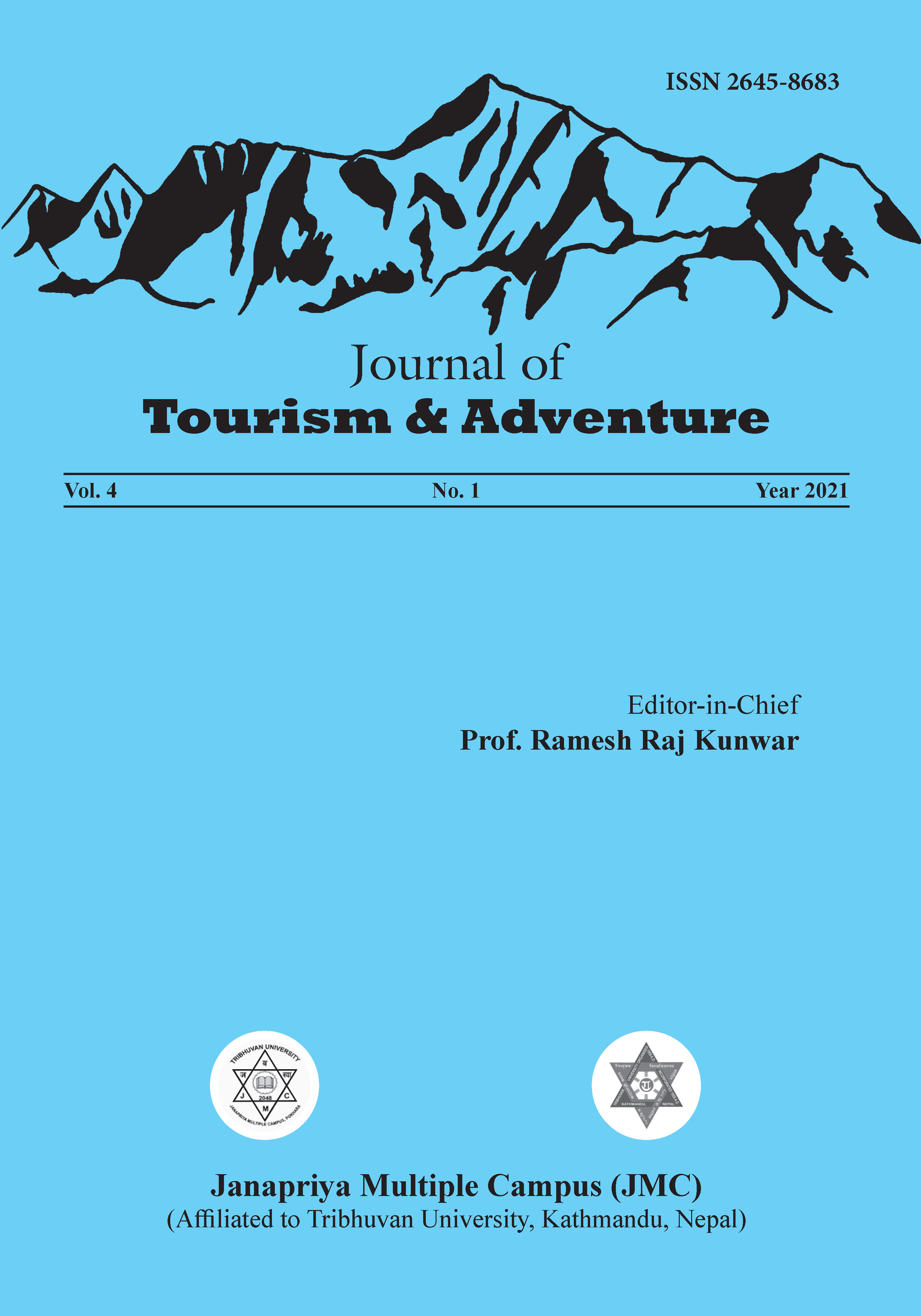Impact of COVID-19 on Pilgrimage Tourism: A Case Study of Lumbini, Nepal
DOI:
https://doi.org/10.3126/jota.v4i1.40637Keywords:
COVID-19, pilgrimage tourism, uncertainty, impact, Lumbini- NepalAbstract
The coronavirus outbreak is troubling the pilgrimage tourism industry in terms of economic, social, food, employment, and spiritual faith as pilgrimage activities are being stopped during the pandemic. The COVID-19 restriction and the nationwide lock-down has made it a very difficult time for pilgrims to stop the travel movement and this has made a big worry for government around the world. The pilgrimage tourism in Mecca, Vatican City, Israel, and India has been affected much by pandemic as gathering in the pilgrimage sites have been restricted since the year 2020. Lumbini one of the most important pilgrimage site, which is also a UNESCO-listed World Heritage site in Nepal, and has a significant contribution to the national economy. This research uses Lumbini, Nepal, the birthplace of Lord Buddha, to explore the impact of novel coronavirus on pilgrimage tourism and discusses the challenges experienced by Buddhist pilgrim, monks and nuns in different monasteries in 2020 and during the first quarter of the year 2021. The research is qualitative. The study is based on both primary and secondary data gathered through interviews with the related stakeholders and the review of several relevant secondary sources. The outcomes of the research illustrate that pilgrimage tourism has been extremely affected by coronavirus and lock-down causing multiple effects on social creation, economic and holy activities, and daily lives of the monks and nuns in Lumbini.
Downloads
Downloads
Published
How to Cite
Issue
Section
License
Authors retain the copyright of their articles.




